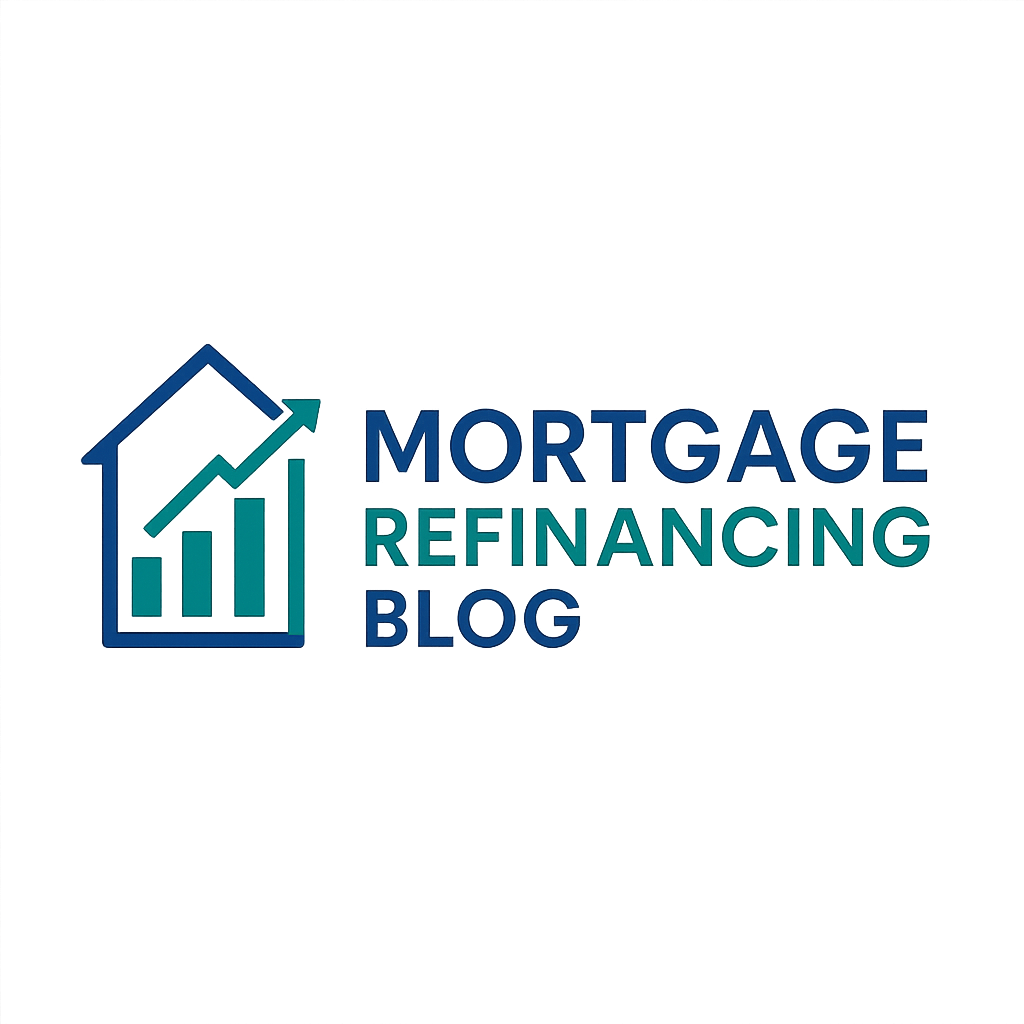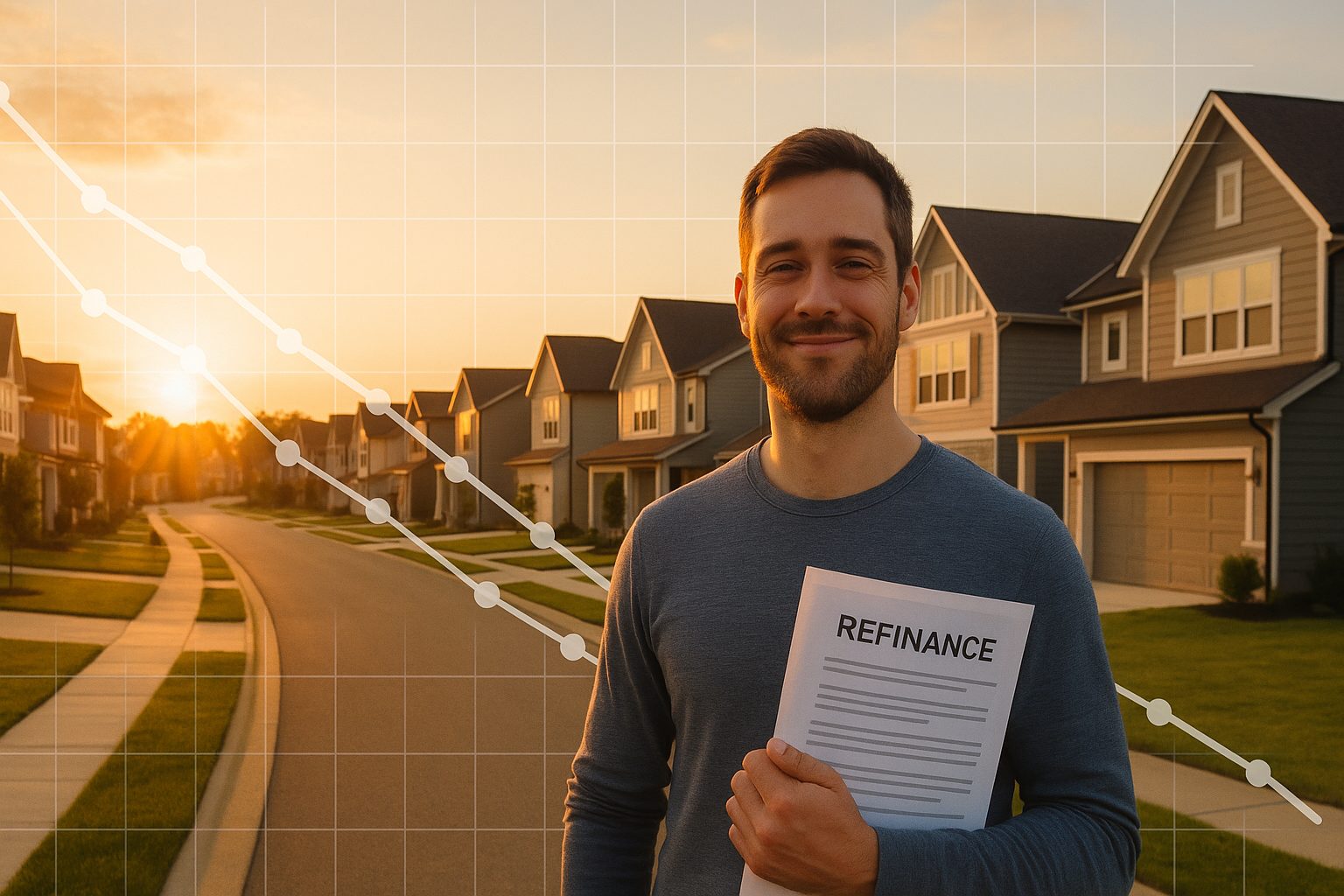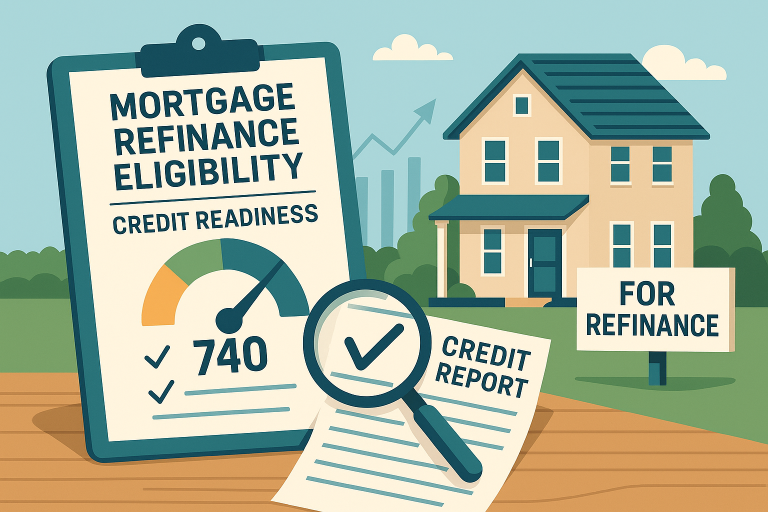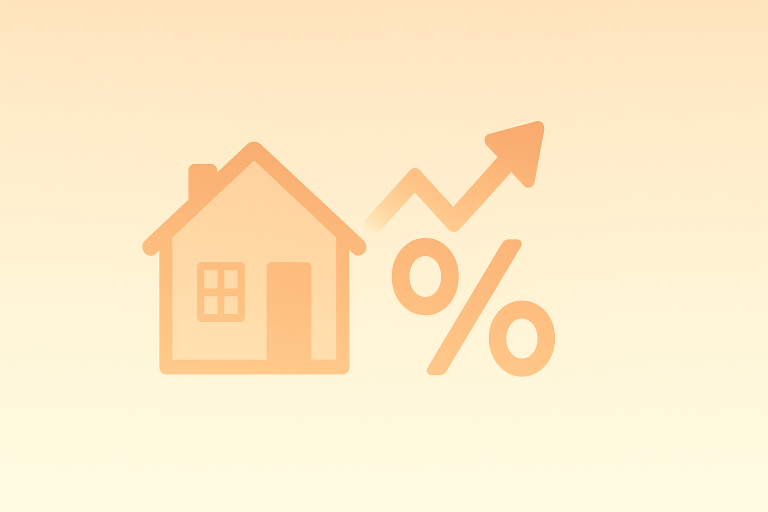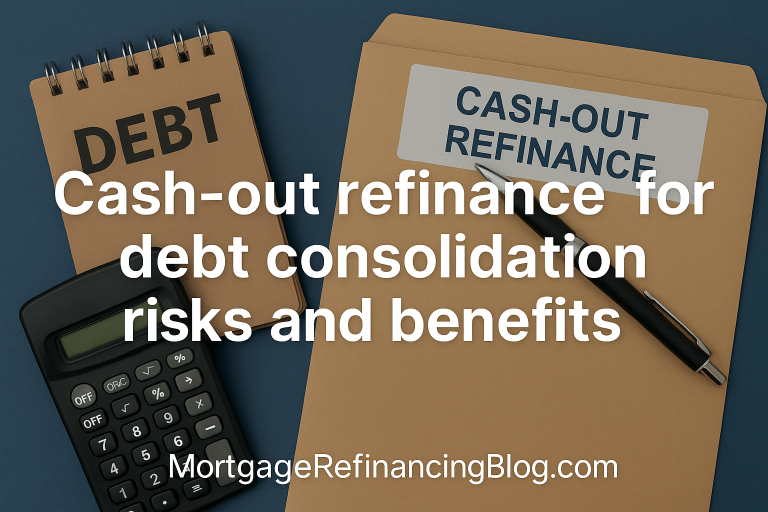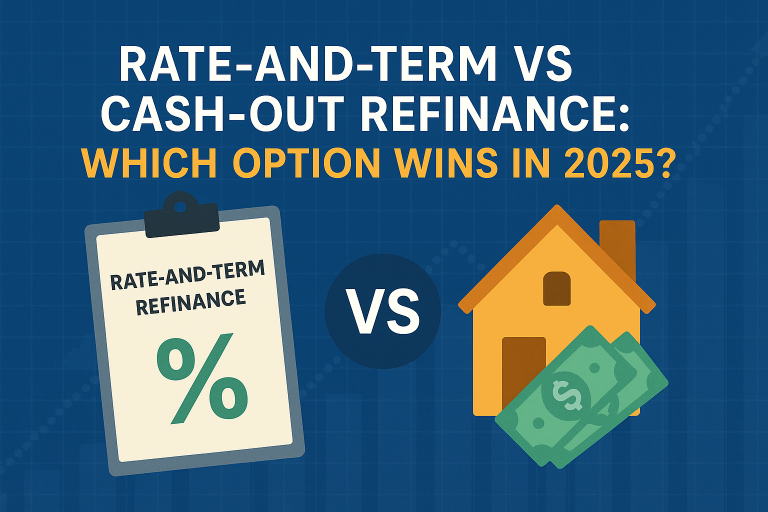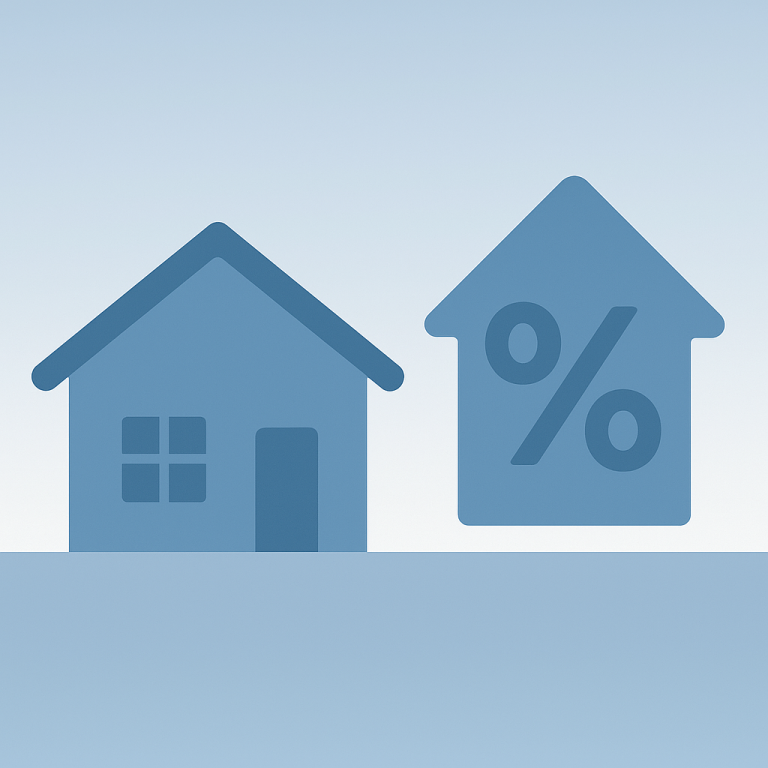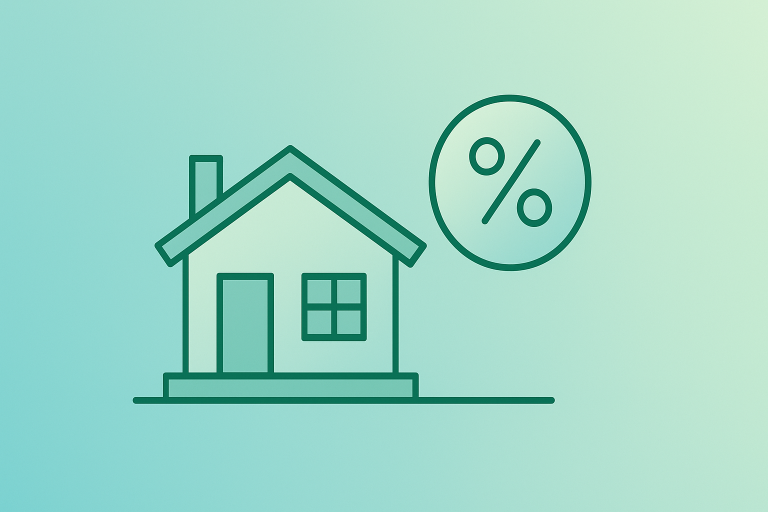Ultimate Guide to Mortgage Refinancing in 2025
Introduction
Mortgage refinancing has become a critical financial strategy for homeowners navigating 2025’s complex lending landscape. With rates fluctuating between 6.5% and 7% throughout the year, understanding when and how to refinance can save thousands in interest payments[1]. This comprehensive guide is essential for homeowners considering refinancing their current mortgage, those seeking to access home equity through cash-out refinancing, or anyone looking to optimize their monthly payments. Whether you’re facing rising interest rates, improved credit scores, or changing financial circumstances, refinancing might be the key to unlocking significant savings and financial flexibility. We’ll explore everything from basic concepts to advanced strategies, ensuring you have the knowledge to make informed decisions about your mortgage in today’s market environment.
What Is Mortgage Refinancing?
Mortgage refinancing is the process of replacing your existing home loan with a new mortgage, typically to secure better terms, lower interest rates, or access your home’s equity. When you refinance, you essentially pay off your current mortgage with a new loan that has different terms, rate, or structure.
The fundamental principle behind refinancing is simple: if you can secure a new loan with more favorable conditions than your current mortgage, you can potentially save money over the life of the loan. This might mean reducing your monthly payment, shortening your loan term, or converting from an adjustable-rate mortgage (ARM) to a fixed-rate loan for stability.
Refinancing isn’t just about interest rates. Homeowners also use it to remove private mortgage insurance (PMI), consolidate debt, or tap into their home’s equity for major expenses like home improvements or education costs. The decision to refinance depends on various factors including current market rates, your credit score, home value, and long-term financial goals.
How Mortgage Refinancing Works
The refinancing process mirrors the original mortgage application but with some key differences. Since you already own the home, the focus shifts from proving your ability to purchase to demonstrating your ability to maintain payments under new terms.
The Application Process
You’ll start by submitting a new mortgage application with income verification, credit check, and debt-to-income ratio analysis. Lenders will review your financial situation since your original mortgage, considering any changes in income, employment, or credit status.
Property Valuation
A new appraisal determines your home’s current market value, which is crucial for calculating your loan-to-value ratio (LTV). This ratio affects both your eligibility and the interest rate you’ll receive. If your home has appreciated significantly, you might qualify for better rates or eliminate PMI.
Underwriting and Approval
The underwriting process evaluates your application against current lending standards. This includes verifying employment, analyzing bank statements, and ensuring you meet debt-to-income requirements. Modern automated underwriting systems can expedite this process, though complex financial situations may require manual review.
Closing Process
Once approved, you’ll receive a closing disclosure detailing all costs and terms. At closing, you’ll sign the new loan documents, pay closing costs, and your old mortgage will be paid off with proceeds from the new loan.
Pros and Cons of Refinancing
Advantages
Lower Monthly Payments: The primary benefit of refinancing is typically reduced monthly payments through lower interest rates. Even a 1% rate reduction can save hundreds monthly on a typical mortgage.
Long-term Interest Savings: Over the life of a 30-year mortgage, refinancing from a 7% to 6% rate can save tens of thousands in interest payments, depending on the loan amount.
Shortened Loan Terms: Refinancing to a 15-year mortgage can help you build equity faster and pay off your home sooner, though monthly payments will be higher.
Cash Access: Cash-out refinancing allows you to access your home’s equity for major expenses, debt consolidation, or investments.
Improved Loan Terms: Switch from an ARM to a fixed-rate mortgage for payment stability, or remove PMI if your home has appreciated significantly.
Disadvantages
Closing Costs: Refinancing involves significant upfront costs, typically 2-6% of the loan amount. These costs can take years to recoup through monthly savings.
Extended Repayment Period: Refinancing restarts your mortgage term, potentially extending the time you’ll be making payments and increasing total interest paid.
Qualification Challenges: Stricter lending standards, reduced income, or decreased home values might prevent qualification or result in less favorable terms.
Market Timing Risks: Interest rates can change between application and closing, potentially affecting your anticipated savings.
Eligibility and Credit Factors
Credit Score Requirements
Most lenders require a minimum credit score of 620 for conventional refinancing, though the best rates typically require scores above 740. Government-backed programs like FHA streamline refinancing may accept lower scores, sometimes as low as 580.
Your credit score directly impacts your interest rate. The difference between a 620 and 780 credit score can mean a 0.5-1% rate difference, translating to hundreds of dollars in monthly savings on a typical mortgage.
Income and Employment Verification
Lenders need proof of stable income and employment history. This includes recent pay stubs, tax returns, and employment verification letters. Self-employed borrowers face additional scrutiny and may need to provide profit and loss statements or bank statements.
Debt-to-Income Ratio
Your debt-to-income ratio (DTI) compares monthly debt payments to gross monthly income. Most lenders prefer DTI ratios below 43%, though some programs allow higher ratios with compensating factors like substantial cash reserves or excellent credit.
Loan-to-Value Requirements
The loan-to-value ratio compares your mortgage balance to your home’s current value. Most conventional refinancing requires LTV ratios below 80% to avoid PMI. Higher LTV ratios are possible but may result in higher rates or additional costs.
Types of Refinancing
Rate-and-Term Refinancing
This is the most common type, focusing on changing your interest rate, loan term, or both without accessing additional cash. Homeowners typically pursue rate-and-term refinancing to reduce monthly payments or pay off their mortgage faster.
The process involves replacing your current mortgage with a new one of equal or lesser amount. Common scenarios include refinancing from a 30-year to 15-year mortgage, switching from an ARM to fixed-rate loan, or simply securing a lower interest rate.
Cash-Out Refinancing
Cash-out refinancing allows you to borrow more than you owe on your current mortgage, receiving the difference in cash. This option is popular for home improvements, debt consolidation, or major purchases.
The new loan amount exceeds your current mortgage balance, with the excess funds available at closing. Lenders typically allow cash-out refinancing up to 80% of your home’s value, though some programs permit higher ratios.
Streamline Refinancing
Government-backed mortgages offer streamline refinancing programs with reduced documentation and faster processing. FHA streamline refinancing, for example, doesn’t require a new appraisal or extensive income verification if you meet specific criteria.
These programs are designed to help borrowers lower their payments with minimal paperwork and reduced closing costs. However, they’re only available to borrowers with existing government-backed loans.
2025 Market Snapshot
The mortgage market in 2025 presents unique challenges and opportunities for refinancing. Current interest rates reflect ongoing economic uncertainty and Federal Reserve policy decisions.
Current Rate Environment
As of July 2025, average mortgage rates have stabilized in the 6.5% to 7% range, with 30-year fixed-rate mortgages averaging 6.72% according to Freddie Mac data. This represents a slight improvement from 2024’s 6.7% average but remains elevated compared to the historic lows of 2020-2021.
Key Market Data Points:
- 30-year fixed refinance rates: 6.84% average
- 15-year fixed refinance rates: 6.06% average
- VA 30-year refinance rates: 6.33% average
Market Trends
Refinance application volume has shown volatility throughout 2025, with the Fannie Mae Refinance Application-Level Index indicating a 20.8% week-over-week increase in dollar volume for the week ending July 11, 2025[7]. This uptick suggests renewed interest as rates showed signs of stabilizing.
The National Association of Home Builders forecasts mortgage rates will average 6.75% throughout 2025, potentially declining to 6.27% in 2026 as economic conditions improve[8]. This outlook influences refinancing decisions, with many homeowners weighing current savings against potential future rate improvements.
Step-by-Step Refinancing Walkthrough
Step 1: Evaluate Your Current Situation
Begin by gathering your current mortgage information including balance, interest rate, monthly payment, and remaining term. Calculate your home’s estimated value using online tools or recent comparable sales in your area.
Assess your current credit score and financial situation. Order a free credit report to identify any issues that might affect your application. Calculate your debt-to-income ratio to understand your qualification prospects.
Step 2: Research and Compare Lenders
Shop with multiple lenders to compare rates, fees, and terms. Don’t focus solely on interest rates; consider closing costs, processing times, and customer service quality. Online lenders often offer competitive rates, while local banks might provide more personalized service.
Request loan estimates from at least three lenders within a 14-day period to minimize credit score impact. Compare annual percentage rates (APRs) rather than just interest rates to account for fees and costs.
Step 3: Submit Your Application
Once you’ve selected a lender, complete the application process. You’ll need to provide financial documentation including recent pay stubs, tax returns, bank statements, and your current mortgage statement.
Be prepared to explain any changes in your financial situation since your original mortgage. This might include job changes, income fluctuations, or new debts that could affect your qualification.
Step 4: Complete the Appraisal Process
Your lender will order a home appraisal to determine current market value. This typically occurs within 1-2 weeks of application approval. The appraisal affects your loan-to-value ratio and final terms.
Prepare your home for the appraisal by addressing any obvious maintenance issues and gathering documentation of recent improvements that might affect value.
Step 5: Review and Close
Once approved, you’ll receive a closing disclosure detailing all loan terms and costs. Review this document carefully, comparing it to your original loan estimate. You have three days to review before closing.
At closing, you’ll sign new loan documents and pay closing costs. Your old mortgage will be paid off, and the new loan terms take effect immediately.
Common Refinancing Pitfalls
Focusing Only on Interest Rates
Many homeowners fixate on interest rates while ignoring closing costs and fees. A slightly higher rate with lower fees might save more money over time, especially if you plan to move within a few years.
Extending the Loan Term Without Considering Total Cost
Refinancing to a new 30-year mortgage when you’ve already paid down your current loan significantly might lower monthly payments but increase total interest paid over the loan’s life.
Ignoring Break-Even Analysis
Failing to calculate how long it takes to recoup closing costs through monthly savings is a critical error. If you plan to move before reaching the break-even point, refinancing might not be beneficial.
Inadequate Shopping and Comparison
Accepting the first offer without comparing multiple lenders can cost thousands in higher rates or fees. Rate differences of even 0.25% can significantly impact long-term costs.
Overlooking Private Mortgage Insurance
If your new loan requires PMI and your current one doesn’t, factor this cost into your calculations. PMI can add hundreds to your monthly payment, potentially offsetting interest savings.
Real-World Case Studies
Case Study 1: The Rate Reduction Refinance
Background: Sarah, a marketing manager from Denver, had a $350,000 mortgage at 7.2% interest with 25 years remaining. Her monthly principal and interest payment was $2,447.
Situation: With improved credit and market conditions, Sarah qualified for a 6.5% rate on a new 30-year mortgage. While extending the term wasn’t ideal, the rate reduction offered significant monthly savings.
Outcome: Sarah’s new monthly payment dropped to $2,212, saving $235 monthly or $2,820 annually. Her closing costs totaled $7,000, creating a 30-month break-even period. Since she planned to stay in the home for at least five years, the refinance made financial sense.
Key Lesson: Even when extending the loan term, substantial rate reductions can provide valuable cash flow relief while maintaining reasonable long-term costs.
Case Study 2: The Cash-Out Strategy
Background: Mike and Jennifer, a couple from Austin, owned a home worth $500,000 with a remaining mortgage balance of $200,000 at 6.8% interest. They needed $75,000 for home improvements and debt consolidation.
Situation: Rather than taking a home equity loan or personal loans, they chose cash-out refinancing. They qualified for a $350,000 mortgage at 6.6% interest, receiving $75,000 in cash after closing costs.
Outcome: Despite borrowing more, their monthly payment increased only modestly due to the lower interest rate. They consolidated high-interest credit card debt and funded renovations that increased their home’s value by $90,000.
Key Lesson: Cash-out refinancing can be an effective tool for debt consolidation and home improvements when used strategically, especially when market conditions allow for competitive rates.
Key Takeaways
Mortgage refinancing in 2025 requires careful analysis of current market conditions, personal financial circumstances, and long-term goals. With rates stabilizing around 6.5-7%, homeowners with higher-rate mortgages may find opportunities for significant savings.
Success depends on thorough preparation, comprehensive lender comparison, and realistic break-even analysis. Don’t rush the process; take time to improve your credit score and financial position if necessary to qualify for better terms.
Consider the total cost of refinancing, including closing costs, potential PMI, and the impact of extending your loan term. Factor in your timeline for staying in the home and broader financial goals when making decisions.
Stay informed about market trends and policy changes that might affect future rates. While timing the market perfectly is impossible, understanding broader economic conditions can help inform your refinancing strategy.
Answer Engine Snapshot
Quick Refinancing Facts for 2025:
• Current Rates: 30-year refinance rates average 6.84%, 15-year rates at 6.06% • Closing Costs: Expect 2-6% of loan amount in refinancing costs • Credit Requirements: Minimum 620 credit score, best rates require 740+ • Break-Even Rule: Calculate months to recoup closing costs through savings • Market Outlook: Rates expected to average 6.75% through 2025 • Application Volume: 20.8% weekly increase in refinance applications (July 2025) • Qualification Standards: Debt-to-income ratios below 43% preferred • Popular Options: Rate-and-term refinancing dominates, cash-out refinancing growing • Processing Time: Typically 30-45 days from application to closing • Best Candidates: Homeowners with rates above 7.5% or significant equity gains
Key Facts Table
• Average Refinance Rate (30-year): 6.84% • Average Refinance Rate (15-year): 6.06% • Typical Closing Costs: 2-6% of loan amount • Minimum Credit Score: 620 (740+ for best rates) • Maximum Debt-to-Income Ratio: 43% • Application Volume Change: +20.8% week-over-week (July 2025) • Average Processing Time: 30-45 days
Frequently Asked Questions
Q: Is refinancing worth it in 2025 with current rates? A: Refinancing can be worthwhile if you can reduce your current rate by at least 0.75-1% or if you need to access equity. With current rates around 6.84%, homeowners with rates above 7.5% should seriously consider refinancing.
Q: How much does it cost to refinance a mortgage? A: Refinancing typically costs 2-6% of your loan amount. For a $300,000 mortgage, expect $6,000-$18,000 in closing costs. These include appraisal fees, title insurance, origination fees, and other standard costs.
Q: What credit score do I need to refinance? A: Most lenders require a minimum 620 credit score, though the best rates typically require 740 or higher. Government programs like FHA streamline refinancing may accept lower scores.
Q: How long does the refinancing process take? A: The typical refinancing process takes 30-45 days from application to closing. This includes time for application processing, appraisal, underwriting, and final approval.
Q: Can I refinance if I have less than 20% equity? A: Yes, but you’ll likely need to pay private mortgage insurance (PMI) if your loan-to-value ratio exceeds 80%. Some programs allow higher ratios, but rates may be less favorable.
Q: Should I refinance to a 15-year mortgage? A: A 15-year refinance can save substantial interest over the loan’s life and build equity faster. However, monthly payments will be higher. Consider this option if you can afford the increased payment and want to pay off your home sooner.
Footnotes
